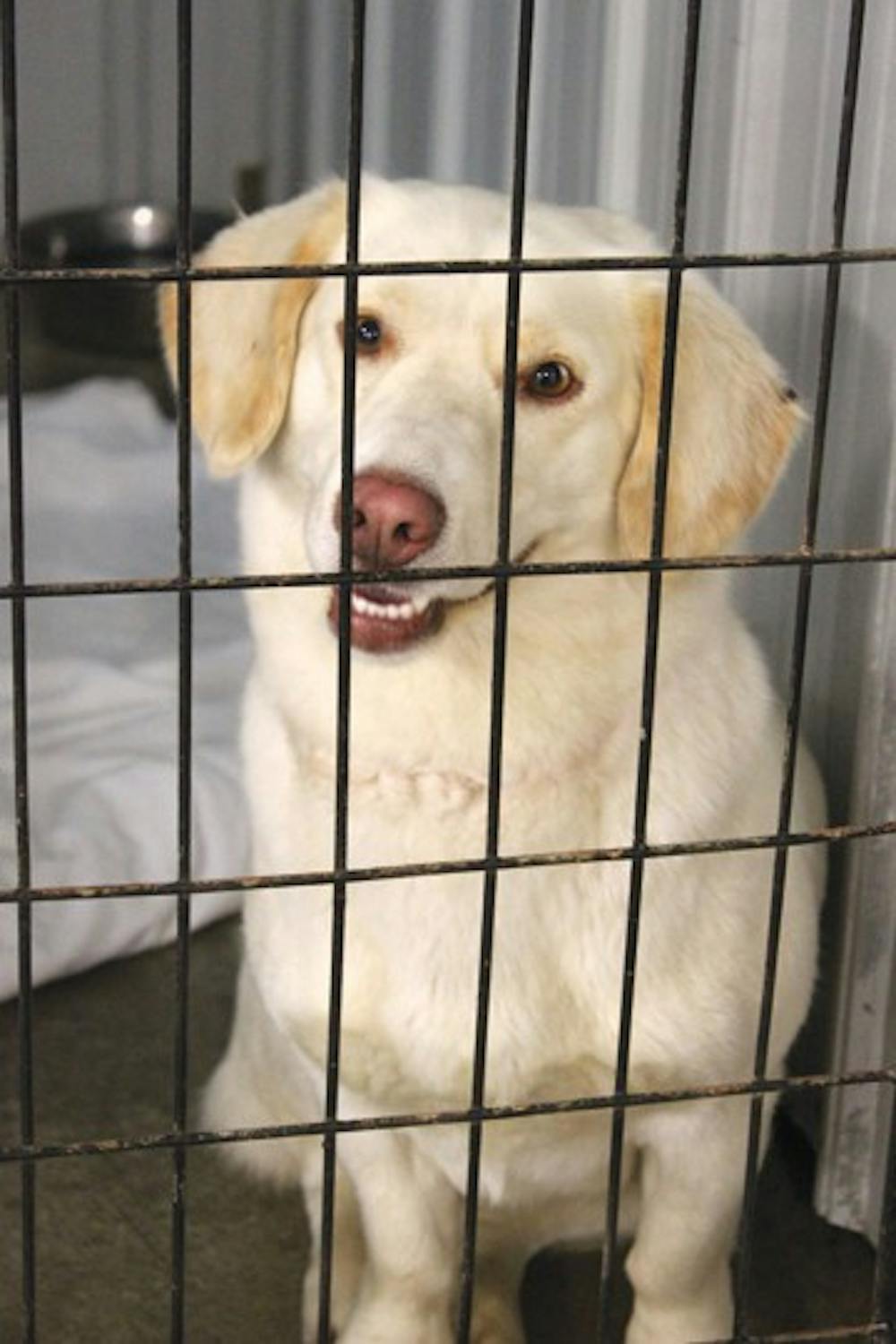Note: This story has been edited since originally published to reflect that animals euthanized at the Muncie Animal Shelter are both domestic and wild, to include more than just dogs in the number of euthanized animals, and to reflect the number of animals the shelter took in overall in 2012.
Last year, an average of two animals were euthanized every workday at the Muncie Animal Shelter, a number that experts say could be decreased by community responsibility and spaying and neutering family pets.
“When I first took over this job last year ... you come in with such high hopes that you’re not going to have to euthanize anything — that you’re going to conquer the world,” said Phil Peckinpaugh, director of the Muncie Animal Shelter. “However, the solution to not euthanizing is you end up stacking them, warehousing them almost.”
The Muncie Animal Shelter is a government-run open admittance shelter, meaning they cannot turn any animal away. The shelter has five officers that cover all of Delaware County, a population of more than 110,000.
In order to deal with the high volume of animals, including raccoons and bats and other wild animals, the shelter works with rescue groups and facility transfers to other no-kill facilities.
“[Euthanasia is] never an easy decision to make, but it’s the right decision to make a lot of times,” Peckinpaugh said. “The dog that is being euthanized — the aggressive dog or whatever the situation is — that’s a dog that, in my opinion, a lot of animal shelters would refuse to take in the first place. They can’t adopt it out either.”
In 2011, the shelter took in 2,155 animals and euthanized 931. In 2012, it took in 3,821 and euthanized 652.
Despite the lower number of euthanized animals, Peckinpaugh said he wishes the number could be lower.
The animals that we euthanize are absolutely not adoptable, he said.
In 2012, 249 euthanized animals were sick or injured, 206 were wild or aggressive and 197 were euthanized at the owner’s request.
“I think that for a community to be successful at reducing the euthanasia rate at the government shelter, there has to be a no-kill facility in the community and we have that with ARF,” said Peckinpaugh. “They provide a great service.”
The Animal Rescue Fund in Muncie works to help curb the animal overpopulation problem through it’s Spay Neuter In-Need Pets program, or SNIP.
The program offers discounts or free services through veterinarians and clinics to spay and neuter pets for low-income owners.
Melissa Blair, director of ARF, has seen countless animals at ARF that have come from the Muncie Animal Shelter that would have been euthanized had they stayed there.
“Euthanasia is a horrible thing,” she said. “I think in the world we live in today ... we can have smartphones with every app known to man. So why is it so hard for us humans to figure out how to control the pet overpopulation problem?”
Blair said she believes that if lawmakers would make stricter spay and neuter laws, pet overpopulation could be solved.
In addition to helping owners spay and neuter their pets, ARF also gives out food and other supplies to owners that can’t afford it in the hopes that the animal won’t end up in the shelter system.
ARF also goes into the school systems to teach children compassion for animals and the importance of spaying and neutering.
“I have always said that someday, I hope to be out of a job,” Blair said. “Ask any other rescuer and they would tell you the same thing. We hope to be out of a job someday. We do have an overpopulation problem in this community. We are trying to fix that, but I think it’s going to take a few years to see that.”
For more information on the SNIP program and ARF visit munciearf.com.


